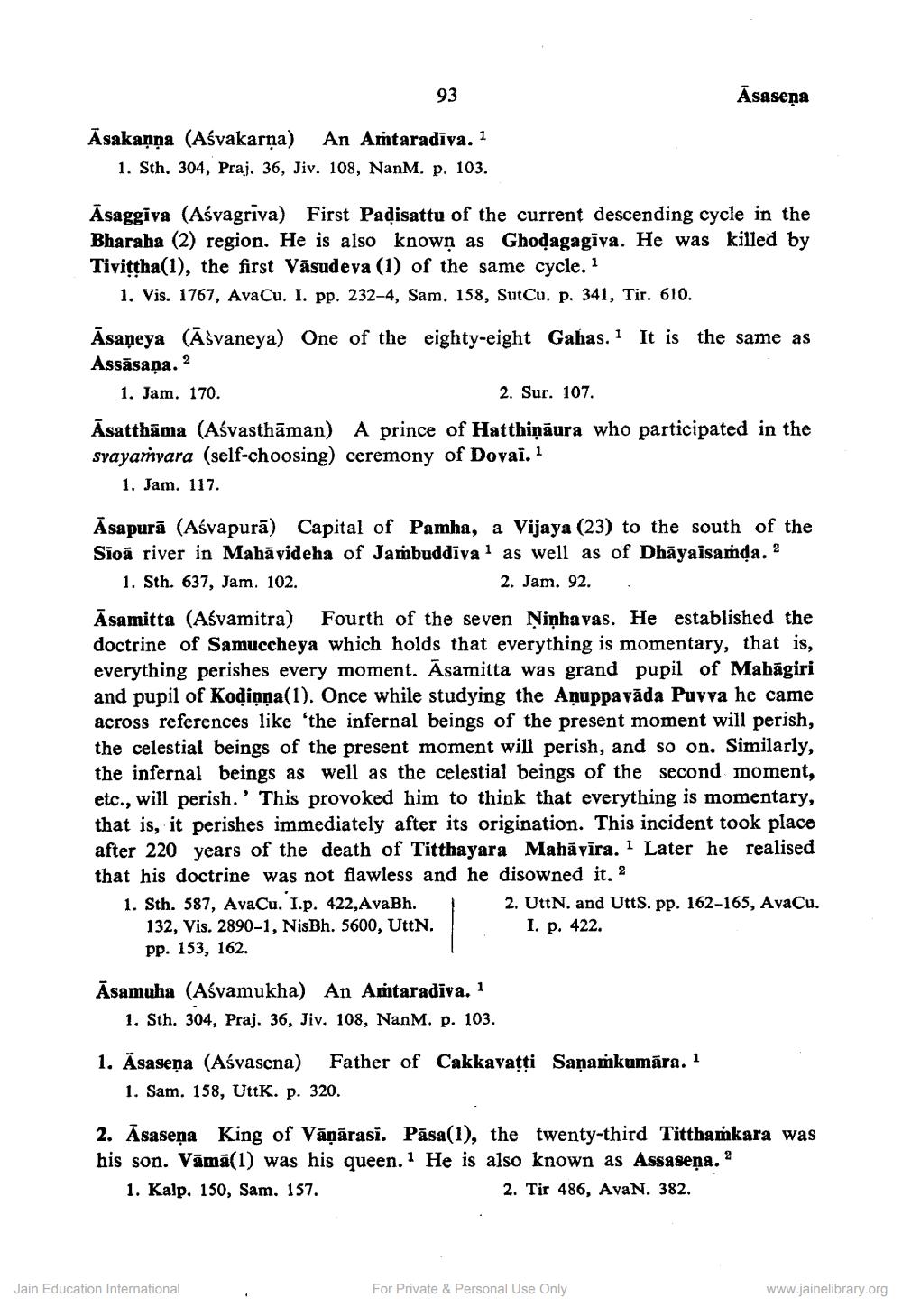________________
93
Āsasena
Asakanna (Ašvakarna) An Amtaradiva. 1
1. Sth, 304, Praj. 36, Jiv. 108, NanM. p. 103.
Asaggiva (Ašvagriva) First Padisattu of the current descending cycle in the Bharaba (2) region. He is also known as Ghoďagagiva. He was killed by Tivittha(1), the first Väsudeva (1) of the same cycle. 1
1. Vis. 1767, AvaCu. I. pp. 232–4, Sam. 158, SutCu. p. 341, Tir. 610. Āsaņeya (ĀŠvaneya) One of the eighty-eight Gahas. It is the same as Assāsaņa. 1. Jam. 170.
2. Sur. 107. Āsatthāma (Aśvasthāman) A prince of Hatthiņāura who participated in the syayamvara (self-choosing) ceremony of Dovai. 1
1. Jam. 117.
Āsapurā (Aśvapurā) Capital of Pamha, a Vijaya (23) to the south of the Sioā river in Mahāvideha of Jambuddiva as well as of Dhāyaisamậa. 1. Sth. 637, Jam. 102.
2. Jam. 92. . Asamitta (Ašvamitra) Fourth of the seven Ninha vas. He established the doctrine of Samuccheya which holds that everything is momentary, that is, everything perishes every moment. Āsamitta was grand pupil of Mahăgiri and pupil of Kodinpa(1). Once while studying the Anuppa văda Puvva he came across references like the infernal beings of the present moment will perish, the celestial beings of the present moment will perish, and so on. Similarly, the infernal beings as well as the celestial beings of the second moment, etc., will perish.' This provoked him to think that everything is momentary, that is, it perishes immediately after its origination. This incident took place after 220 years of the death of Titthayara Mahā vīra.1 Later he realised that his doctrine was not flawless and he disowned it, 2 1. Sth. 587, AvaCu. I.p. 422, AvaBh. 2. UttN. and UttS. pp. 162-165, AvaCu. 132, Vis. 2890-1, NisBh. 5600, UttN.
I. p. 422. pp. 153, 162.
Āsamuha (Asyamukha) An Amtaradīva. 1
1. Sth. 304, Praj. 36, Jiv. 108, NanM. p. 103.
1. Äsasena (Aśvasena) Father of Cakkavatti Sanamkumāra. 1
1. Sam. 158, UttK. p. 320.
2. Asasena King of Vāņārasi. Pāsa(1), the twenty-third Titthamkara was his son. Vāmā(1) was his queen.1 He is also known as Assasena. 2 1. Kalp. 150, Sam. 157.
2. Tir 486, AvaN. 382.
Jain Education International
For Private & Personal Use Only
www.jainelibrary.org




